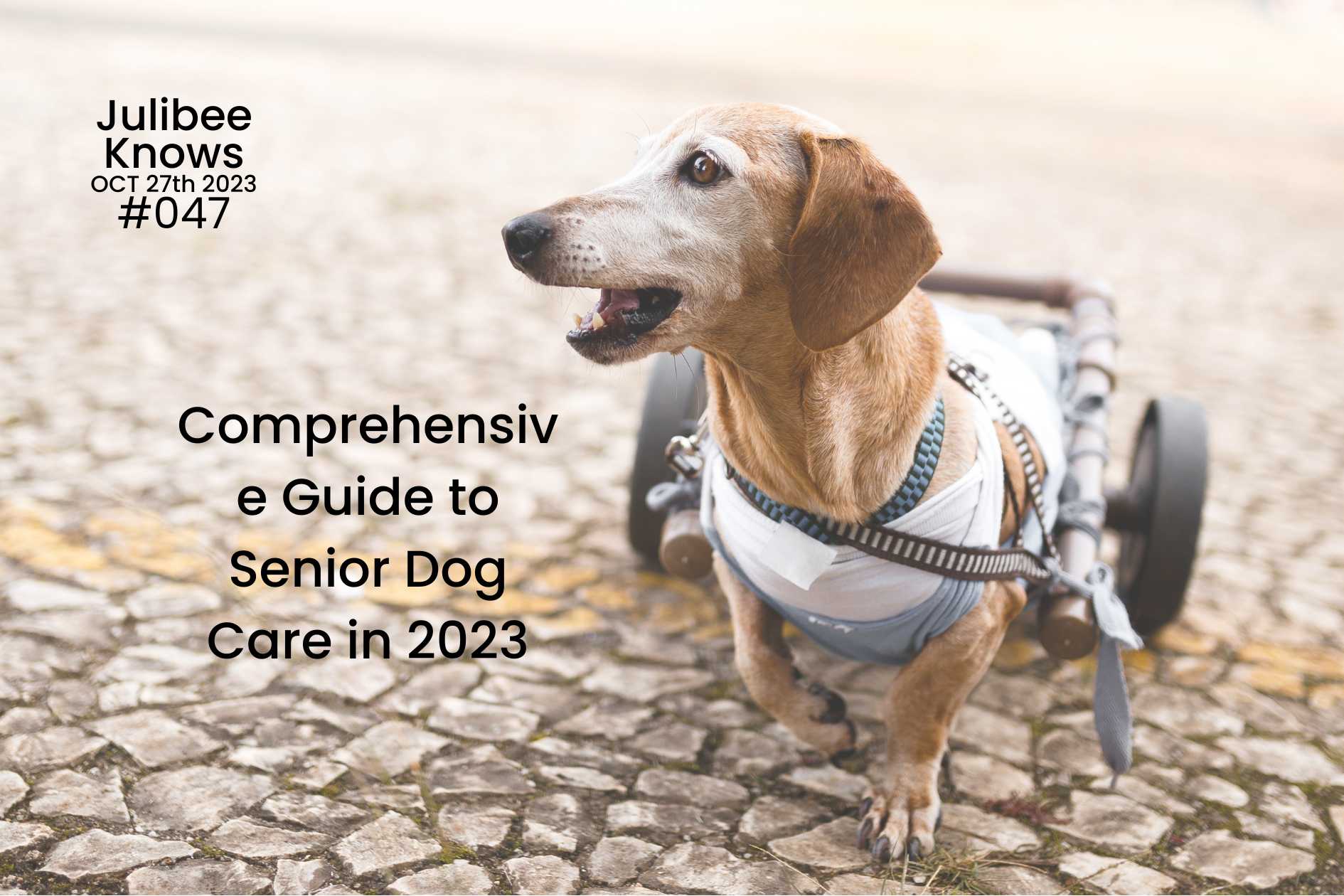
Comprehensive Guide to Senior Dog Care in 2023
Learn how to provide quality care for your aging furry companion. Understand the common signs of aging in senior dogs and discover tips on choosing the right products, nutrition, and lifestyle adjustments. Ensure your senior...
Inside this Article:
Dog owners are faced with the reality that their beloved pets age faster than they do. Caring for senior dogs is a crucial responsibility to ensure their golden years are of the highest quality. Senior dogs often exhibit ten common symptoms, including hearing and vision decline, significant and rapid weight changes, alterations in coat quality, narrow airways, reduced muscle mass, diminished digestive function, tooth loss, emotional fluctuations, and signs of cognitive decline. These symptoms serve as indicators that a dog is entering their senior years. However, there are behavioral changes that may occur earlier than physical symptoms. These include increased sensitivity to sounds, more frequent barking, a reduced sense of direction, decreased interaction with humans, declining hygiene habits, and changes in sleep patterns. Typically, dogs are considered to enter their senior years around the age of seven, but this can vary by individual.
1. Senior Dog Care Products
For senior dogs, you can choose specialized products to protect various aspects of their lives. For breeds prone to elbow dysplasia, consider elbow protectors and warm clothing. If your senior dog has trouble getting into vehicles, a foldable, sturdy, and anti-slip pet ramp is a valuable tool. For dogs with weakened hind legs, consider rear leg supports or dog wheelchair to aid them during walks. If your senior dog is unable to walk on their own, a well-made, lightweight pet stroller can compensate for their reduced mobility and still provide the benefits of outdoor time. For senior dogs with poor eyesight and declining spatial awareness, protective collars can prevent them from bumping into objects. In cases of joint problems, under the guidance of a veterinarian, it's essential to have anti-inflammatory or pain-relief joint medications.
2. Nutrition
Senior dogs often encounter dental issues, so regularly monitor their oral health, seek timely veterinary care, and maintain good dental hygiene. When it comes to food selection, opt for easy-to-chew and swallow options. Nutrition and digestion should be considered holistically. Personalized food plans are ideal, and yearly physical check-ups can help tailor the dog's diet according to their specific needs. Commercial dog food may not always be suitable; making homemade meals based on your dog's requirements may become necessary.
3. Space Arrangement
As the overall bodily functions of senior dogs decline, their activity time decreases, and they tend to prefer staying at home. How can you create an ideal living environment for them? First, avoid unnecessary adjustments. Familiar environments offer a sense of security to dogs, even if their vision and sense of direction have slightly diminished. By maintaining the same setup they're used to, you'll ease your dog's daily routines and reduce your own cleanup efforts. Keep pathways clear and free from obstacles to help your dog move around easily. Ensure that frequently overlooked items don't pose hazards. Lastly, designate a safe space. This is important not only for senior dogs but for all dogs. A sheltered, quiet space away from doors and windows can provide a peaceful resting place and a retreat during stressful moments.
4. Daily Walks
Senior dogs may face unique challenges during daily walks due to declining physical abilities, sensory changes, and discomfort from illnesses. Consider shortening each walk while increasing their frequency. Include breaks to reduce physical strain and provide opportunities for mental relaxation. In terms of communication, diminished hearing and vision, combined with noisy outdoor environments, can make it challenging for dogs to understand hand signals or verbal commands. In such cases, tactile communication, like gentle leash tugs, can be a helpful alternative. If your senior dog becomes sensitive, consider non-contact socialization or carefully supervised meet-and-greets with other dogs. After the walk, you can provide a soothing massage to help relax their muscles.
5. Traveling with Your Senior Dog
Some may wonder if it's suitable to travel with sensitive senior dogs. First and foremost, consult a vet to ensure your dog's health can withstand travel. Safety is paramount. If your senior dog is up for it, traveling to natural settings can be beneficial. Nature provides an escape from the city's hustle and bustle, offering stress relief to your dog. Just as humans find relaxation in a change of scenery, dogs can also benefit. Additionally, the exposure to new stimuli can engage your dog's cognitive resources, slowing cognitive decline - much like how puzzles and brain games benefit elderly humans.

